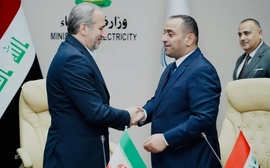The International Monetary Fund (IMF) has predicted Azerbaijan’s non-hydrocarbon GDP to grow by 5.5 percent this year. The forecast was made based on strong growth indicators shown in the first quarter.
The information came in the final statement of the IMF that briefed the outcomes of the consultations held from May 25 to June 7 in Baku.
According to the IMF, the “Azerbaijan 2030” long-term development plan sets out a clear roadmap for the country to reduce dependence on hydrocarbon exports and promote a more sustainable and diversified economy.
“The ongoing decline in crude oil production has been offset by gas and there are significant ongoing investments in alternative sources of energy. Part of the additional windfall from hydrocarbon revenues could be invested in productive investment, including green infrastructure that could also support intraregional trade,” the fund said in a statement.
The “Azerbaijan 2030: National Priorities for Socio-Economic Development” program was approved in Azerbaijan in February 2021. It highlights five “national priorities” of the country’s socio-economic development to be implemented during the decade. These are steadily growing, competitive economy, a dynamic, inclusive society based on social justice, areas of modern innovations and competitive human capital, the great return to the territories liberated from the Armenian occupation, and a clean environment and country of “green growth.”
The return of the citizens once forcibly expelled from the Azerbaijani territories is on top of the government’s agenda. Currently, the liberated districts and cities of Azerbaijan are being rehabilitated within massive infrastructure and socio-economic projects. The return of the citizens to their homes is expected to start from the Aghali village of the Zangilan district, being restored based on a “smart village” concept. President Ilham Aliyev has already inaugurated the first phase of the restoration project in May.
Transition to “green energy” has been key to the Azerbaijani government’s energy policy over recent years. The country’s authorities intend to increase the share of renewable energy sources in the country’s overall energy production to 30 percent by 2030. Estimates put the renewable energy potential of Azerbaijan at 37,000 MW — around ten thousand of which was unveiled after the liberation of the country’s territories from Armenian occupation in 2020.
To make this happen, Azerbaijan has adopted the Law on the Use of Renewable Energy Sources (RES) and is currently developing a five-year RES strategy for 2022-2026.
The government also plans to transform the liberated Karabakh (Garabagh) and East Zangazur regions fully into a green energy zone by 2050, as well as reduce carbon dioxide emissions by 40 percent. The alternative energy potential of the liberated territories of Azerbaijan includes almost all types of renewable energy sources, including hydro, solar, wind, and geothermal.
Four small hydroelectric power plants have been put into operation in the liberated lands so far, and five more with the capacity of 25-30 MW will be operational soon.
In 2021, the real GDP growth in Azerbaijan was 5.6 percent. The share of oil and gas in GDP increased by 1.8 percent due to loosening the OPEC+ restrictions and an increase in gas exports. The country’s non-oil GDP grew by 7.2 percent.







 The number of evacuees from flooded areas in Kazakhstan has reached 97,852 people, including about 32,856 children since March 27.
The number of evacuees from flooded areas in Kazakhstan has reached 97,852 people, including about 32,856 children since March 27.
 The Islamic holy month of fasting, Ramadan comes to an end this week with the celebration of a joyous festival called Eid (meaning “festival” in Ar...
The Islamic holy month of fasting, Ramadan comes to an end this week with the celebration of a joyous festival called Eid (meaning “festival” in Ar...
 Iran's senior military leaders described the drone and missile attack on Israel on April 14 night as “successful".
Iran's senior military leaders described the drone and missile attack on Israel on April 14 night as “successful".
 Iranian President Ebrahim Raisi warned Israel that it would face a "real and extensive" response if it makes any "mistake" following Tehran’s missi...
Iranian President Ebrahim Raisi warned Israel that it would face a "real and extensive" response if it makes any "mistake" following Tehran’s missi...



